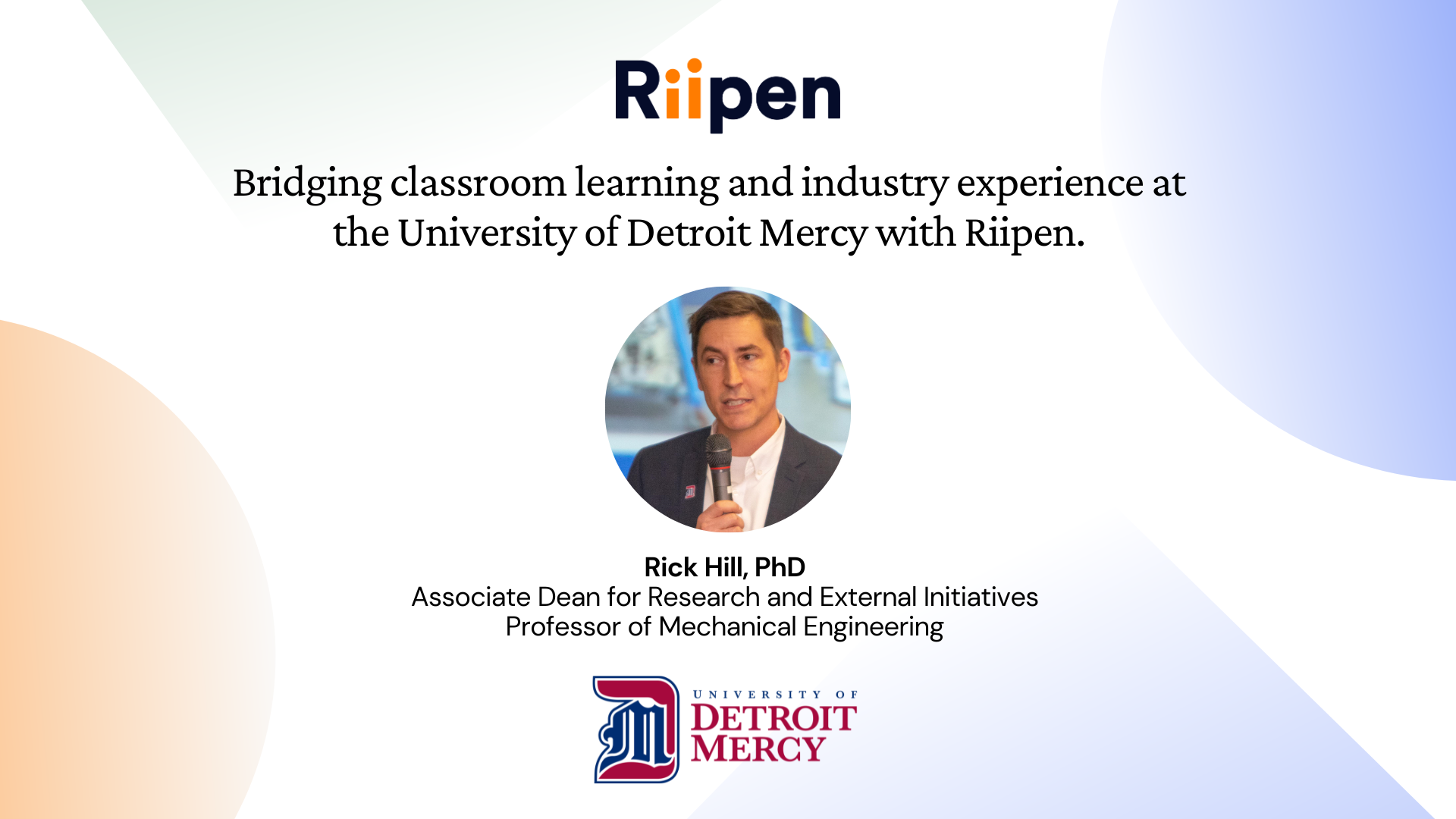Educator spotlight: Dr. Will Duffy, Professor at The University of Memphis.
.png)
Dr. Will Duffy, a professor in the Department of English at The University of Memphis, recently piloted an advanced composition course in the Writing, Rhetoric, and Technical Communication program. Through Riipen, he provided his students with practical experience by partnering with a nonprofit organization, transforming his course into a powerful experiential learning opportunity.
This innovative approach was made possible through the Build Better Careers program, led by CAEL (Council for Adult and Experiential Learning) and funded by the Truist Foundation. Below, Dr. Duffy shares his insights on the course, the challenges and successes his students experienced, and the value of integrating real-world projects into the classroom.
Can you tell us about your course and how you integrated Riipen into it?
I teach an upper-division advanced composition course on public writing and advocacy. This semester, I piloted a course on writing for nonprofits. Through Riipen, my students partnered with a nonprofit serving Indigenous communities in Canada by providing mental health resources online. They worked on various deliverables, such as social media posts, blog entries, and organizational documents like lesson plans for interactive workshops.
This approach gave students professional writing experience and a better understanding of workplace realities, such as navigating scenarios where they didn’t have final control over the outputs—a valuable lesson for their future careers.
Why is experiential learning important for students?
Experiential learning bridges the gap between academic knowledge and professional practice, offering students opportunities to develop essential workplace skills. In my course, students navigated real-world scenarios such as working with clients, managing feedback, and adapting to unexpected challenges—skills that are difficult to teach in a traditional classroom setting.
With hands-on projects, students directly collaborated with a nonprofit organization, honing practical skills in a supportive, low-stakes environment. This approach encouraged them to take risks, reflect on their processes, and grow both professionally and personally. By connecting theory to practice, they saw the immediate relevance of their academic work and gained valuable preparation for meaningful contributions in their future careers.
What challenges and opportunities did students encounter during the project?
Students faced real-world challenges that don’t often occur in academic settings, like adjusting to client schedules and dealing with unexpected roadblocks. For example, when feedback wasn’t immediately available, we developed internal review processes to keep the work moving. These experiences helped students build essential skills like adaptability, collaboration, and problem-solving.
Sensitivity and cultural awareness were also key, given the nonprofit’s focus on Indigenous mental health resources. The organization supported students by providing video introductions and contextual resources, helping them approach their work thoughtfully and effectively.
How did Riipen facilitate these partnerships?
Riipen made it incredibly easy to explore and vet potential partnerships. The platform allowed for preliminary discussions before fully committing to a project. I compare it to a thoughtful matchmaking process—it’s less about swiping and more about meaningful interactions to ensure alignment.
This structure helped alleviate the uncertainties that sometimes come with external collaborations. I knew that the projects we chose would align with our course goals and deliver meaningful experiences for my students.
What pedagogical benefits did you observe from using Riipen?
Riipen added multiple layers of engagement to the course. Students not only reflected on their work but also on the processes they used to achieve it. They learned how to communicate with organizations, navigate professional feedback, and take risks in a relatively low-stakes environment.
These experiences will undoubtedly benefit them in their future careers. One standout moment involved a student whose exceptional project work earned her an invitation to a university event hosted by the Dean. This shows how career-focused coursework is being recognized at the institutional level.
What’s next for your use of Riipen?
Based on this semester’s success, I plan to continue using Riipen in future courses. I’ll involve students more in identifying projects and refine the planning process to further enhance their growth.
What advice would you give to other educators considering Riipen?
Trust the process. There may be uncertainties at first, but letting go of control and embracing the experiential nature of the platform enhances the learning experience. Riipen’s flexibility and structured approach make it a valuable tool for educators.
Book a chat with our team to discover how Riipen can help you integrate real-world projects into your classrooms today.









.png)


.png)

















.png)







